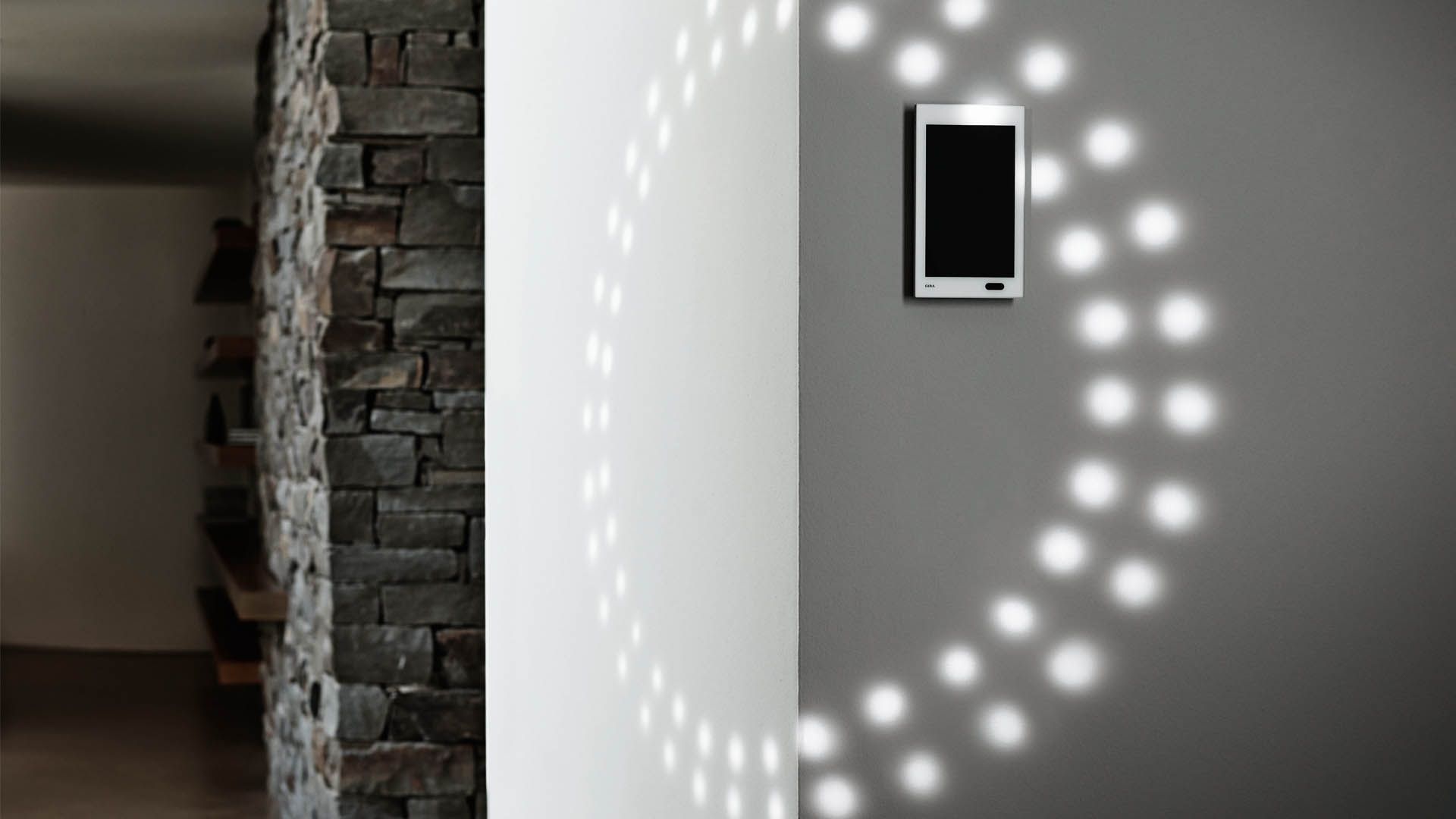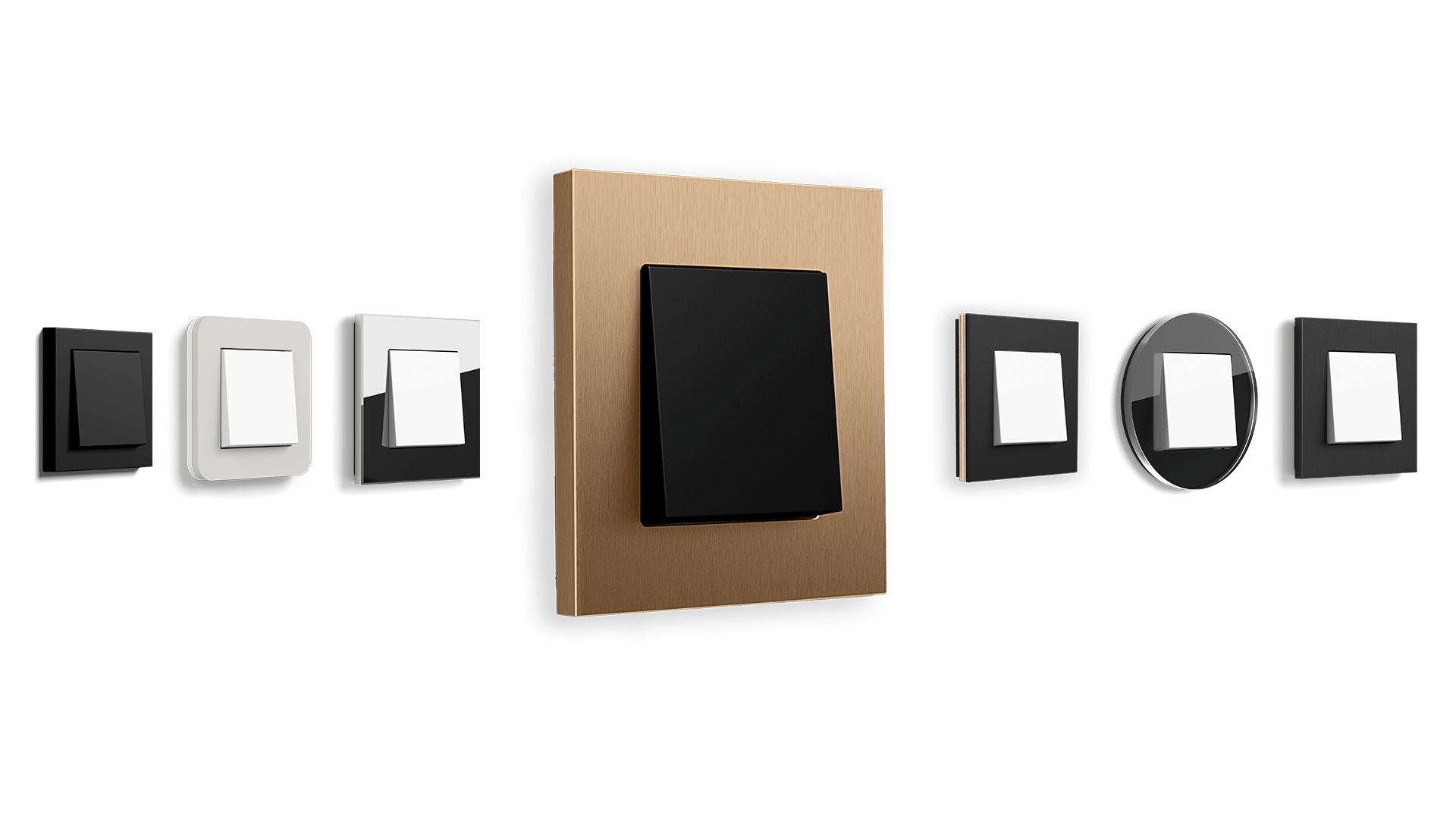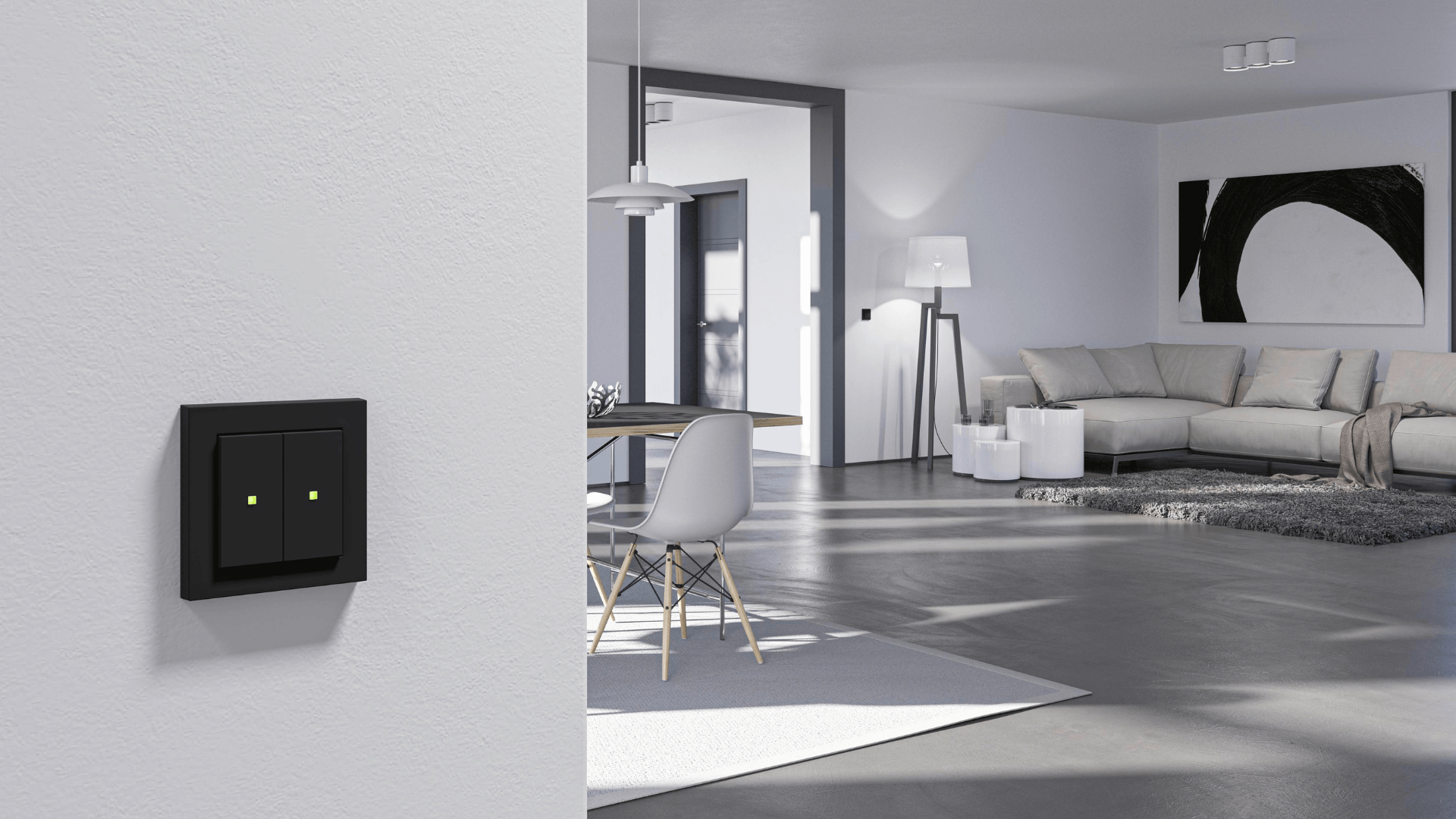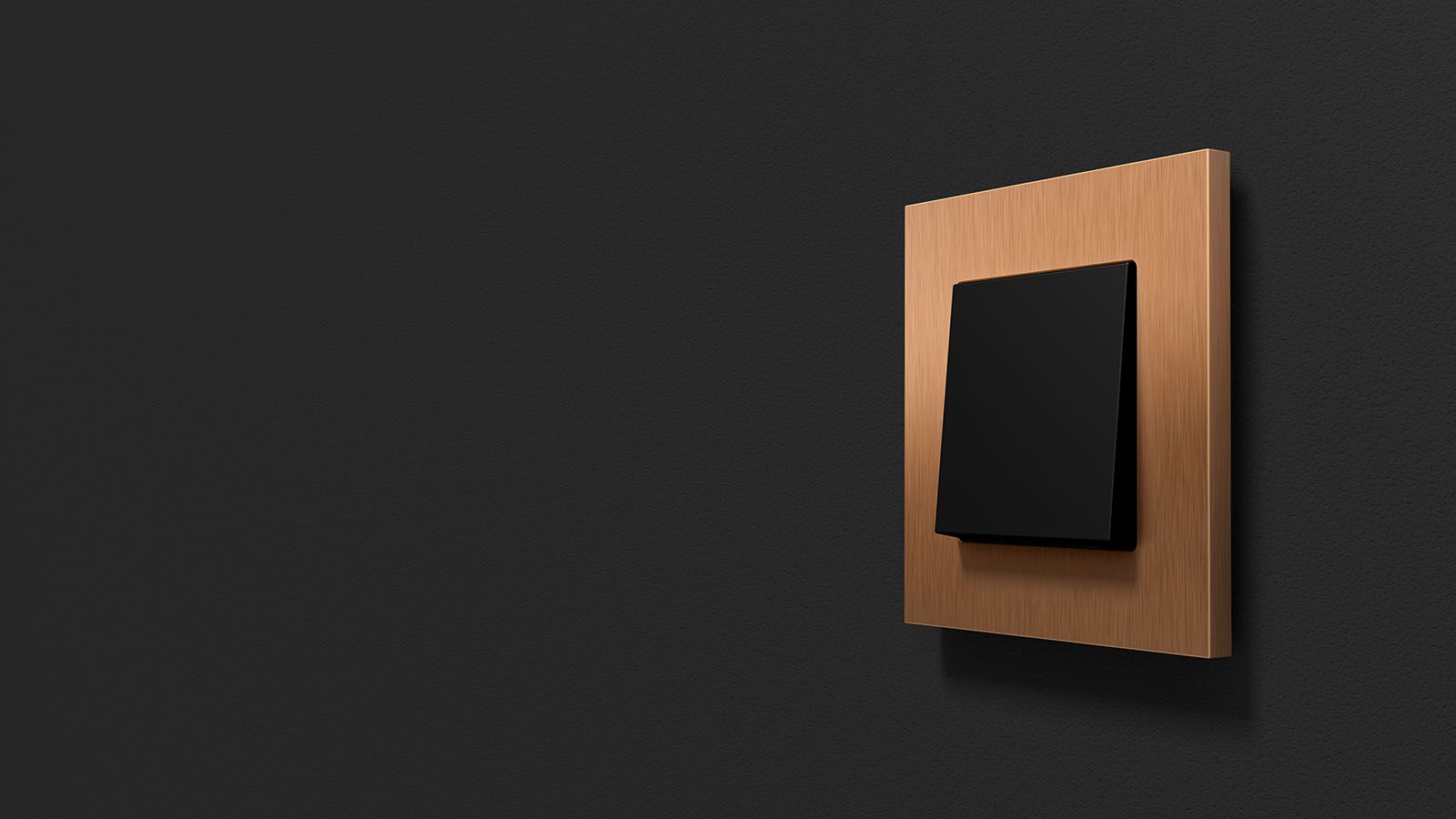
During an interview with Hans-Jörg Müller, Head of Product and Design at Gira, we talked about the aesthetics, functionality, and future of our products.

Our switches, socket outlets, and Smart Home devices combine a unique aesthetic with intuitive control – and Hans-Jörg Müller is one of the people behind our well-known and loved designs. As Head of Product and Design at Gira, many of our products – including the Gira System 55, the Gira pushbutton sensor 4.95, and the Gira surface-mounted video home station 7, bear his signature. In this interview, he talks to us about pioneering technology, effective design, and Gira’s plans for the future.
“Standard switches are making a comeback.”
Gira editorial team: Mr. Müller, do we still need traditional switches if we can control everything in our Smart Home digitally?
Müller: Yes, without a doubt. Standard switches are even making somewhat of a comeback at the moment: in recent years, traditional installations have been very popular. When a building is being kitted out with cutting-edge technology, it is often still fitted with traditional switches. We’ve noticed that customers prefer to use traditional switches rather than interacting with their technology via yet another digital touchpoint. The traditional route is simpler and more intuitive. For this reason, I would say that traditional switches and the Smart Home can co-exist in complete harmony.
“Gira products should be fun for our customers.”
Gira editorial team: How does this co-existence impact Gira products?
Müller: We merge the traditional world of switches with the modern world of the Smart Home. An example is our button for KNX: it looks like a completely normal two-way switch, but its traditional housing is packed with modern Smart Home control technology. However, we consciously adopt a more restrained approach to functionality in our designs. We don’t incorporate every single new gadget that comes onto the market into our products; we focus on creating useful, functional products that will bring our customers joy for years to come.
User-friendliness is another important consideration. The more functions we integrate into a product, the more complex it becomes to configure and operate it. We prioritise simplicity and intuitive operation in almost all of our design decision-making. After all, Gira products should be fun for our customers.
“We don’t observe the world of interior design to find out what our products should look like, but to find out what kinds of spaces they should fit into.”
Gira editorial team: Let’s move on from function to form. What inspires your designs?
Müller: We keep an eye on what’s going on in the world of design and draw inspiration from events like the furniture and interior exhibition in Cologne. We also attend events targeted at the plumbing and heating sector; I really enjoy going to Cersaie Bologna, an exhibition of ceramic tiles and bathroom fittings in Italy. In modern design, we are faced with the challenge of many different styles being combined in a single space. There are no limits on what you can do, which has created a heterogenous and unpredictable design landscape. The same trend is reflected in interior architecture. Our task is to create designs that integrate into this new scenery. This is why we believe that design should be simple, functional, streamlined, and integrative. We want our products to last. And if you want a design to stand the test of time, you have to hold back a little.
Gira editorial team: The latest Gira products – like the Gira pushbutton sensor 4.95 – reflect this design philosophy beautifully.
Müller: Yes, the Gira pushbutton sensor 4.95 was created to harmonise with very modern interiors. But its low-profile and minimalist design means that, with the right surface finish, it works just as well in a more Mediterranean-inspired interior or in a room that is designed to look opulent and over the top. It is a very high-quality, unobtrusive, and integrative product.
Gira editorial team: What role do surface finishes play in the product design process?
Müller: Our surfaces need to be a good fit for the system. We don’t think at product level, but at system level. For example, if we’re designing a new product for the System 55, then the existing System 55 surfaces are the ones that will be available for the new product. If we add a new colour, then it will be available for the entire system.
The Gira pushbutton sensor 4.95 is a standalone device based on the Esprit design line, which is why we opted for Esprit design line surfaces.
“Over the next few years, we will expand our traditional switch and socket outlet lines as well as our range of Smart Home technology.”
Gira editorial team: Let’s talk about the future: Where is Gira headed over the next few years?
Müller: There are two key systems in the world that are relevant to us: the ever-popular mechanical system and the new Smart Home system. With this in mind, we will continue to develop a wide range of new products for our traditional switch and socket outlet lines.
We will also work to build on our Smart Home and smart building offering, particularly for apartments. While KNX was largely reserved for luxury family homes in the 1990s and 2000s, we believe that Smart Home technology will become more prevalent in all types of residential properties in the future. We want to provide solutions for this market.
“Gira door communication technology can take the form of a conventional, standalone system or a system that is integrated into the Smart Home.”
Gira editor: Will door communication also be a part of the journey?
Müller: Absolutely. Our switch range can be divided into two levels: The traditional switches that function independently and the systems that form part of a Smart Home.
There are still large numbers of traditional doorbells on the market. Over the next few years, these doorbells will start to be replaced by audio or video systems. And this trend plays precisely to Gira’s strengths: Our systems can easily be connected to traditional two-wire systems (bell wires; Ed.). Solutions from other manufacturers often require the installer to lay new cables.
On the other hand, door communication is also set to become a significant component of the overall Smart Home system. If your home is a Smart Home, then the door intercom needs to be an integral part of it.
So whether our customers opt for smart technology or a conventional installation, our job – now and in the future – is to offer outstanding solutions for both.
Thank you for taking the time to chat with us!



